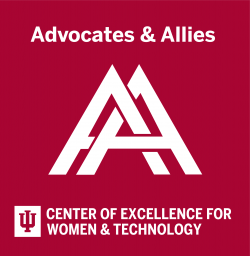Physical disability is generally more recognizable than other types of disability, perhaps giving a false impression that inclusion of people with physical disabilities is easier than other types. This is evident when discussions of equity and inclusion only focus on physical accessibility as a means of remedying ableism – an important step but not the last or only one. We discuss portrayals of physical disability in media and how this shapes our perceptions, the experiences of those with physical disabilities, and how we can move beyond narratives of accessibility.

Reflect: How is physical disability portrayed?
There are many ways that physical disability is portrayed in the media, which shapes our perceptions and reactions to people with physical disabilities. Physical disability has frequently been connected to villainy,1 helpless victimhood,2 or complete dysfunction3 – all of which create an inhuman image4 of disabled people. Such stereotypes shape how people approach those with physical disabilities, such as saviorism causing strangers to randomly encroach on disabled people (e.g., pushing a wheelchair without being asked),5 the proliferation of “inspiration porn,”6 or avoiding people with physical disabilities altogether.7 However, when physically disabled people divert from preconceived notions (e.g., wheelchair users who stand up), they are often punished and publicly admonished; this reaction shows the power of biases in creating a different level of agency and power in society between non-disabled and physically disabled people. Have you seen these stereotypes/biases play out in everyday life? How could they affect your approach to physically disabled people around you?
Learn: Physical Disability in Higher Education
Issues with inclusion of disability in higher education range from continued stigma,10, 11 housing and other facilities access issues,12 and limited attention to the development of disability beyond a physical condition into an empowered identity.13, 14 In STEM, students with physical disabilities face numerous barriers, including lacking transparency from departments about accessibility15 and inaccessible labs,16 which often stems from lacking training/experience for faculty in these fields.17 Limited research has examined stigmatic experiences and accessibility for physically disabled faculty18, 19 and staff20 (though many report limitations on career mobility and stigma).21 Women, particularly students, with physical disabilities, as a result of stigma and barriers, often manage their identities in ways that either help them avoid stigma or work to advocate for change/support.22 Such management and tokenism can be emotionally taxing, making them feel like they aren’t seen as a whole person.
Change:
- Discussion questions: We encourage you to discuss these with friends and colleagues to spark conversation! How might the aforementioned biases/stereotypes appear differently in the classroom, at work, in the greater campus, and other aspects of campus life? What kinds of behaviors are driven by these biases? How can we reimagine our campus to put inclusion and accessibility first, not as an afterthought?
- Expand your ideas of accessibility: Accessibility and accommodation is often mentioned only in light of the Americans with Disabilities Act; while this is an important guideline, only following a legalistic approach to accessibility inherently places disability as a purely legal issue, not a social one.22 What kinds of environments could we create if we consider accessibility as a necessary and uplifting choice for everyone? Not only should we be considerate of physical accessibility in a space, we must also consider how our attitudes and behaviors foster accessibility in a meaningful way. Encourage able-bodied peers to check how they enter and take up space, becoming aware of the ways that ableism seeks to “invisiblize” and exclude people through both spatial structures and interpersonal behaviors.
- Challenge bias about physical disability: We discussed stereotypes/bias around physical disability earlier, and it’s important that we begin to call out saviorism, infantilization, or demonization of those with physical disabilities. Call out anyone who dehumanizes people with physical disabilities – including those who turn disabled people overcoming ableism into “inspiration porn” rather than challenging access barriers. When you are considering representation of disability in personal entertainment, discussions of diversity, or inclusion in curriculum, center work that comes directly from the perspectives of physically disabled people.
Weekly Resource Recommendations
- Book:Academic Ableism - This book explores the way that higher education recreates and reinforces ableism.
- Video: Making Higher Education Accessible - Professionals in higher education discuss accommodations and accessibility, including in light of COVID-19 shifts.
- Article: My Joy is My Freedom - Keah Brown discusses how she finds joy as a disabled Black woman, in a world that expects she has none.
- Podcast: Disability Visibility – Alice Wong interviews disabled people from a diversity of backgrounds, focusing on culture, visibility, and media.
Get these tips delivered to your mailbox!
We send these tips every Tuesday during the fall & spring semesters to our mailing list. If you are not already on our mailing list you can request to be added by completing the form below.

